Exploring G10: The Ultimate Guide to G10 Knife Handles
- February 2, 2024
- 0 comment
The choice of material for a knife handle is as crucial as selecting the blade itself. A handle not only defines the knife’s aesthetics but also its functionality, durability, and comfort in use. Among the myriad of materials available today, G10 stands out as a preferred choice for knife enthusiasts and manufacturers alike. This guide dives deep into the world of G10 knife handles, exploring their advantages, properties, and why they might be the perfect choice for your next knife.
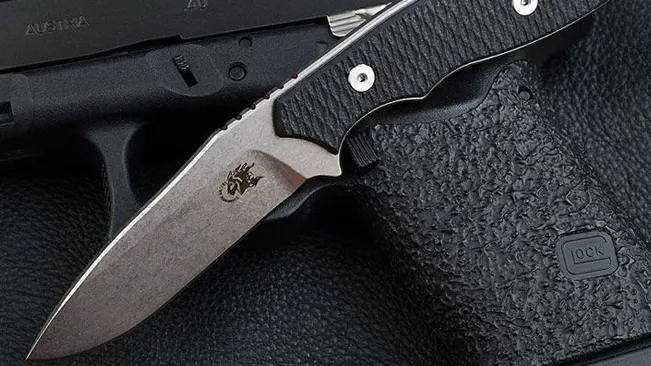
What is G10?
G10 is a high-pressure fiberglass laminate, a type of composite material created by stacking multiple layers of glass cloth, soaked in epoxy resin, and then compressing them under heat until cured. Its origins trace back to the aerospace industry, where durability, strength, and lightweight characteristics are paramount. Today, G10 is not only valued in industrial applications but has also gained prominence in the manufacturing of knife handles due to its exceptional properties.
Properties of G10 Knife Handles
G10 handles are renowned for their incredible durability and resistance to almost all environmental factors. They can withstand moisture, temperature fluctuations, and chemical exposures without degrading. Additionally, the material provides a textured surface that ensures a secure grip, which is vital for knife handling safety and performance.

Durability
High Impact Resistance: G10 handles are extremely resilient against physical impacts, making them less prone to cracking, chipping, or breaking compared to traditional materials like wood or bone. This durability ensures the handle remains intact and functional even under rough usage conditions.
Scratch and Wear Resistance: The material’s hardness and dense structure contribute to its resistance against scratches and wear over time. G10 handles maintain their appearance and structural integrity even with heavy use, which is particularly important for knives used in outdoor, tactical, or professional culinary settings.
Environmental Resistance
Moisture Resistance: G10 is non-porous, which means it does not absorb moisture. This property prevents swelling, warping, or rotting, issues often associated with natural materials like wood. Knives with G10 handles are ideal for use in wet conditions, including fishing, boating, or in kitchens.
Temperature Fluctuations: G10 remains stable across a wide range of temperatures. It neither expands nor contracts significantly, which ensures the knife’s handle feels comfortable in the hand, regardless of extreme cold or heat. This stability makes G10 handles suitable for use in any environment, from frozen landscapes to hot deserts or high-temperature industrial settings.
Chemical Exposures: The resistance to acids, oils, and solvents means that G10 handles can withstand environments where chemical exposure is common without deteriorating. This characteristic is particularly beneficial for knives used in industrial, scientific, or culinary fields, where such exposures might be frequent.
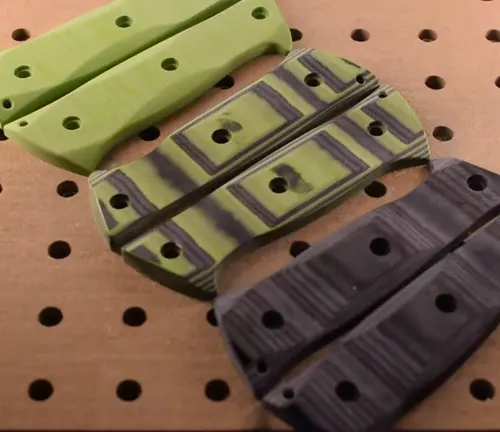
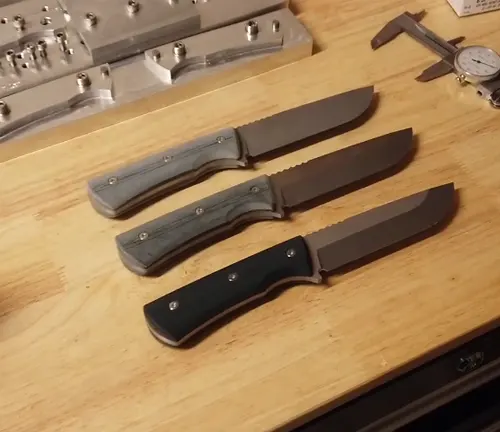
Grip and Comfort
Textured Surface: G10 can be textured during the manufacturing process to provide a non-slip grip. This texture is crucial for knife safety, ensuring the user maintains control of the knife, especially in wet or slippery conditions. The degree of texturing can be customized, from smooth to very aggressive, depending on the intended use of the knife.
Ergonomics: Despite its hardness and durability, G10 can be machined into ergonomic shapes that fit comfortably in the user’s hand. This adaptability allows for the design of handles that reduce hand fatigue and improve control during extended use.
Aesthetic Flexibility
Color and Pattern Variability: G10 is available in a wide range of colors and can be layered to create distinctive patterns. This versatility allows for a high degree of customization, enabling manufacturers and custom knife makers to offer unique aesthetic options that cater to the preferences of diverse users.
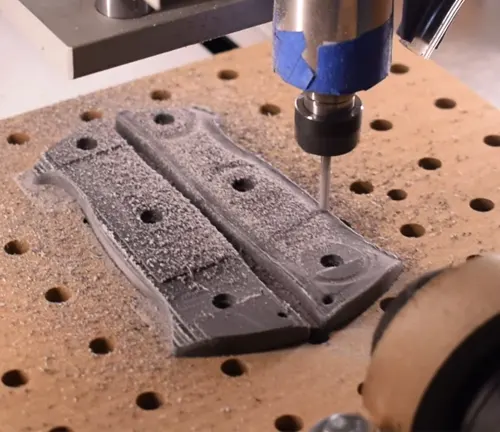
Benefits of G10 Handles Over Other Materials
When compared to traditional materials like wood, metal, or bone, G10 offers a superior balance of durability, maintenance ease, and performance. Unlike wood or bone, it does not absorb moisture or odors, making it ideal for culinary applications. Compared to metals, it is warmer to the touch and lighter, enhancing the knife’s overall balance and handling. Against other synthetics like Micarta or Carbon Fiber, G10 stands out for its cost-effectiveness without sacrificing quality or performance.
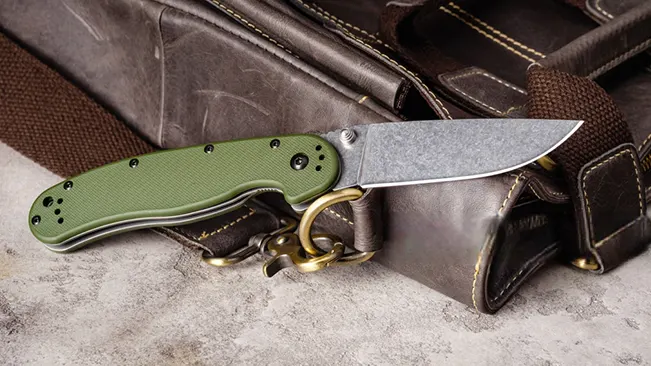
Performance and Usability
- Moisture Resistance: G10 handles excel in wet conditions where wood or bone might warp or swell. This makes G10 knives ideal for outdoor activities like fishing, camping, or any application where the knife might be exposed to the elements.
- Temperature Resistance: Unlike metal handles, which can become uncomfortably hot or cold depending on the environment, G10 maintains a more consistent temperature, ensuring comfort and ease of use in any climate.
- Grip and Comfort: The texture applied to G10 handles can be tailored to enhance grip, an essential feature for safety and precision when using a knife. This customizable texture, combined with the ability to machine G10 into ergonomic shapes, ensures a secure and comfortable hold, even during extended use or in challenging conditions.
Aesthetic and Customization Options
- Aesthetic Flexibility: G10 offers a broad spectrum of color and pattern possibilities, not typically available with materials like metal or bone. This variety allows for high levels of customization, enabling manufacturers and custom knife makers to cater to individual preferences and create visually striking designs.
- Consistency: The manufacturing process of G10 results in material consistency and uniformity that is difficult to achieve with natural materials, ensuring that every handle looks and performs to the same high standard.
Cost-Effectiveness
- Balanced Cost and Performance: While G10 may be more expensive than some plastics or basic woods, it is generally more cost-effective than high-end metals, carbon fiber, or premium natural materials, without compromising on performance or durability. This balance makes G10 an excellent value, offering high-end characteristics at a more accessible price point.
Comparison with Other Synthetics
- Micarta vs. G10: While Micarta, another popular composite material, shares some similarities with G10, it often requires more maintenance to preserve its appearance and can be slightly less durable under certain conditions. G10’s manufacturing process gives it a slight edge in terms of uniform strength and durability.
- Carbon Fiber vs. G10: Carbon Fiber is lighter and has a unique aesthetic appeal but comes at a higher cost. G10 provides a more affordable alternative that still offers excellent durability and performance, making it a preferred choice for practical applications where cost is a consideration.
Design and Aesthetics
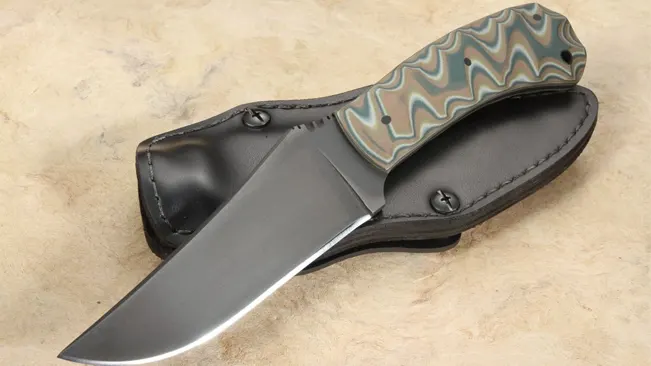
One of the remarkable features of G10 is its versatility in design and color. The material can be manufactured in various colors and patterns, allowing for a wide range of aesthetic options. This customization capability makes G10 handles a favorite among knife makers and owners looking to personalize their gear.
Maintenance and Care for G10 Knife Handles
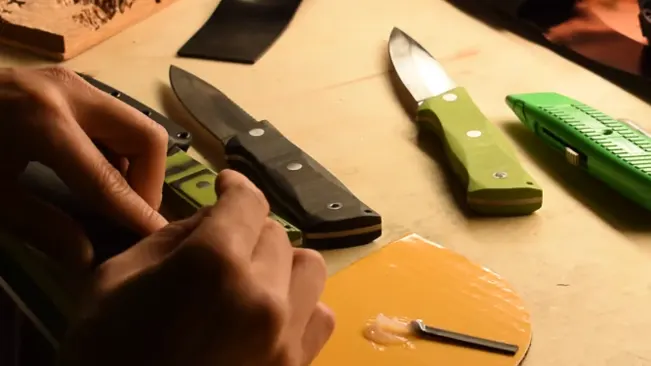
Maintaining G10 knife handles is straightforward and requires minimal effort. For regular cleaning, use mild soap and water, avoiding abrasive cleaners to prevent dulling the surface. It’s important to periodically check and tighten any screws or fittings to ensure the handle remains securely attached. Applying a small amount of oil to metal components can prevent rust and corrosion. Store the knife in a dry, ventilated area to protect both the G10 handle and the knife’s metal parts. If the handle’s texture becomes worn, professional refinishing can restore its appearance and grip. By adhering to these simple care instructions, your G10 knife handle will maintain its durability and aesthetic appeal for years to come.
Selecting the Right G10-Handled Knife
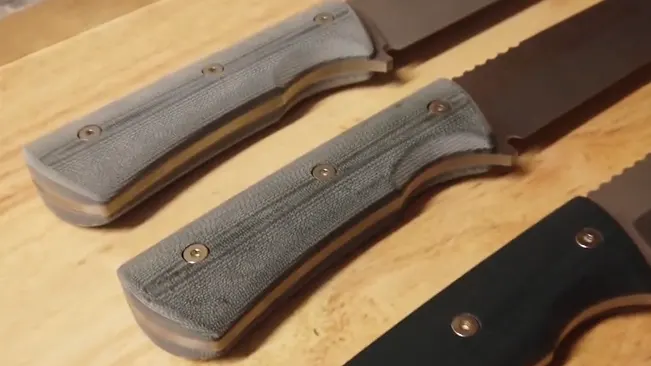
Choosing a G10-handled knife depends on the intended use, personal preference in weight, balance, and aesthetics. Whether for outdoor activities, culinary use, or as an EDC, G10 handles can offer the perfect blend of performance, durability, and style. Consider the knife’s overall design, including blade material and handle ergonomics, to ensure it meets your specific needs.
Conclusion
G10 knife handles offer a compelling choice for anyone looking for durability, maintenance ease, and design flexibility in their knives. Whether you’re a professional chef, an outdoor adventurer, or an everyday carry enthusiast, a G10-handled knife is a reliable companion that combines practicality with aesthetic appeal. As you explore your options, remember the unique benefits G10 brings to the table, making it a standout choice in the world of knife handle materials.
10 FAQs about G10 Knife Handles
- What is G10, and how is it made?
G10 is a type of composite material made from fiberglass and epoxy resin, which are laminated under high pressure and heat to create a very durable and strong material. It is widely used for knife handles due to its robustness and resistance to wear and environmental conditions. - Why choose a G10 handle for a knife?
G10 handles are chosen for their exceptional durability, moisture resistance, and ability to maintain a firm grip even in wet conditions. They offer a great balance of strength and lightweight, making them ideal for both everyday carry knives and specialized tools. - How does G10 compare to other knife handle materials like Micarta or Carbon Fiber?
G10 is similar to Micarta in terms of its composition, but it typically offers a slightly harder surface, providing better scratch resistance. Compared to Carbon Fiber, G10 is less expensive and slightly heavier, but it is more durable and less prone to chipping or cracking under impact. - Can G10 handles be customized?
Yes, G10 handles can be customized in terms of color, pattern, and texture. The material can be layered with different colors or manipulated to create unique patterns, allowing for a high degree of personalization. - Are G10 knife handles heavy?
G10 handles are relatively lightweight, especially when compared to metal handles. The material’s density offers a good balance, making knives easy to handle without adding unnecessary weight. - How do you care for a G10 knife handle?
G10 is very low maintenance. Cleaning can typically be done with soap and water. Avoid using abrasive materials that can scratch the surface. For stubborn stains, a mild solvent like rubbing alcohol can be used sparingly. - Is G10 resistant to chemicals and temperatures?
Yes, G10 is highly resistant to chemicals, including most acids and solvents. It also withstands extreme temperatures, making it suitable for use in various environments without degrading. - What makes G10 a good choice for outdoor and tactical knives?
Its durability, resistance to moisture and temperature fluctuations, and secure grip even in adverse conditions make G10 an excellent choice for outdoor and tactical knives. These properties ensure reliability and performance in critical situations - How does the texture of a G10 handle affect grip?
The texture of a G10 handle can be customized to various degrees of roughness, providing a non-slip grip. This is crucial for knife safety and effectiveness, especially in wet conditions or when used with gloves. - Are there any disadvantages to G10 knife handles?
While G10 handles are highly durable and versatile, they can be more expensive than some traditional materials and might not offer the same warm, natural feel as wood or bone. Additionally, their hardness can be tough on knife sharpeners and cutting tools during customization or repair.

Kerith Simon
As an expert with over ten years of dedicated experience in knife defense, my professional journey is anchored in a profound commitment to the safety and empowerment of individuals through specialized education. My expertise is not only grounded in practical self-defense techniques but also extends to a scholarly understanding of knife functionality, which I have meticulously documented in my authoritative series, This work stands as a testament to my deep engagement with the subject, offering readers critical insights into the nuances of knife selection and usage across various contexts. My approach to teaching and content creation is informed by a rigorous methodology and a continuous pursuit of knowledge, ensuring that the strategies and insights I provide are both effective and scientifically sound. Through a combination of hands-on workshops, comprehensive seminars, and well-researched publications, I strive to elevate the standard of knife defense education, making it accessible and reliable for those seeking to enhance their security and proficiency in this essential skill.

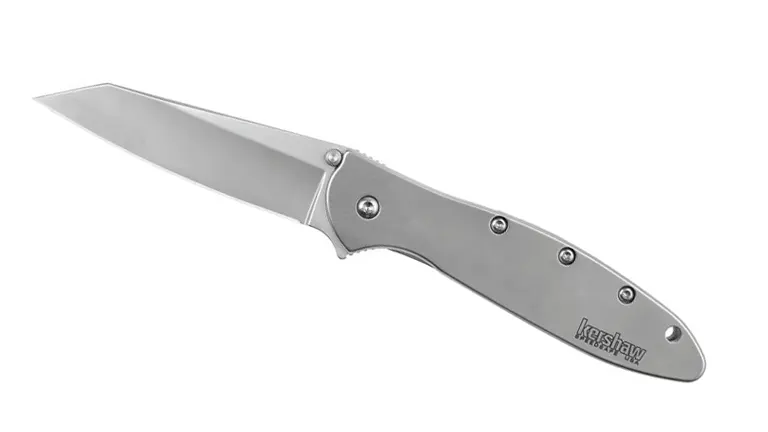
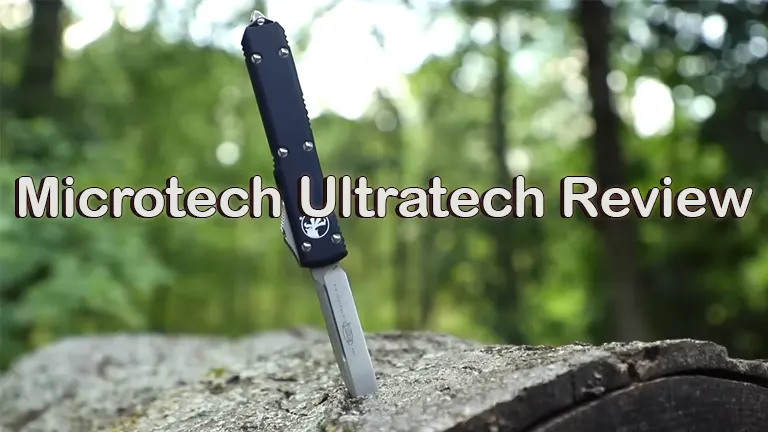
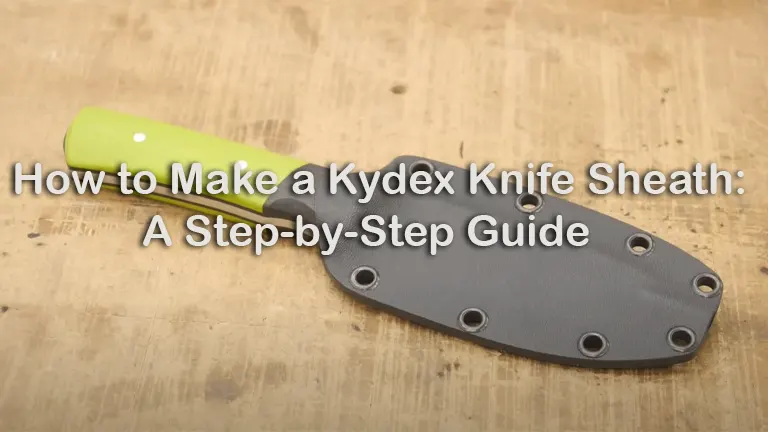
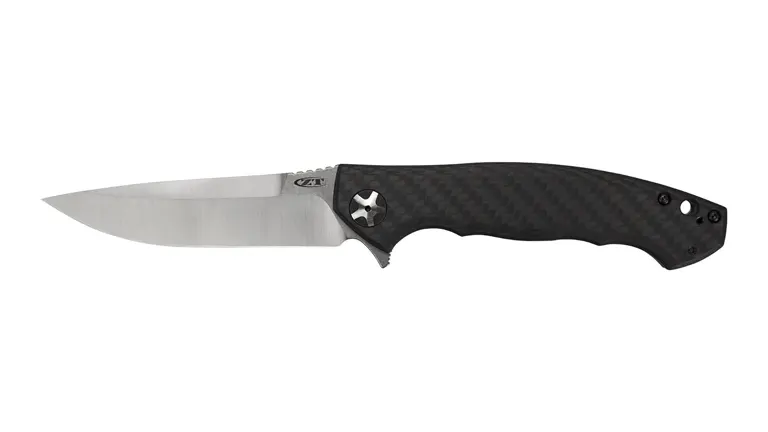



Leave your comment